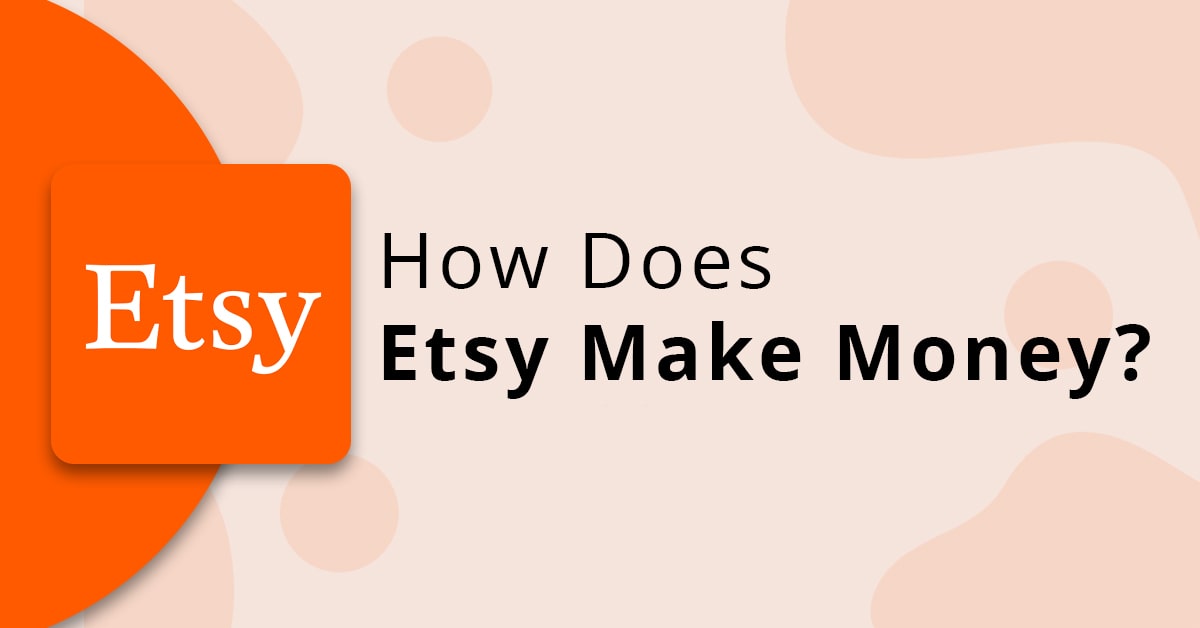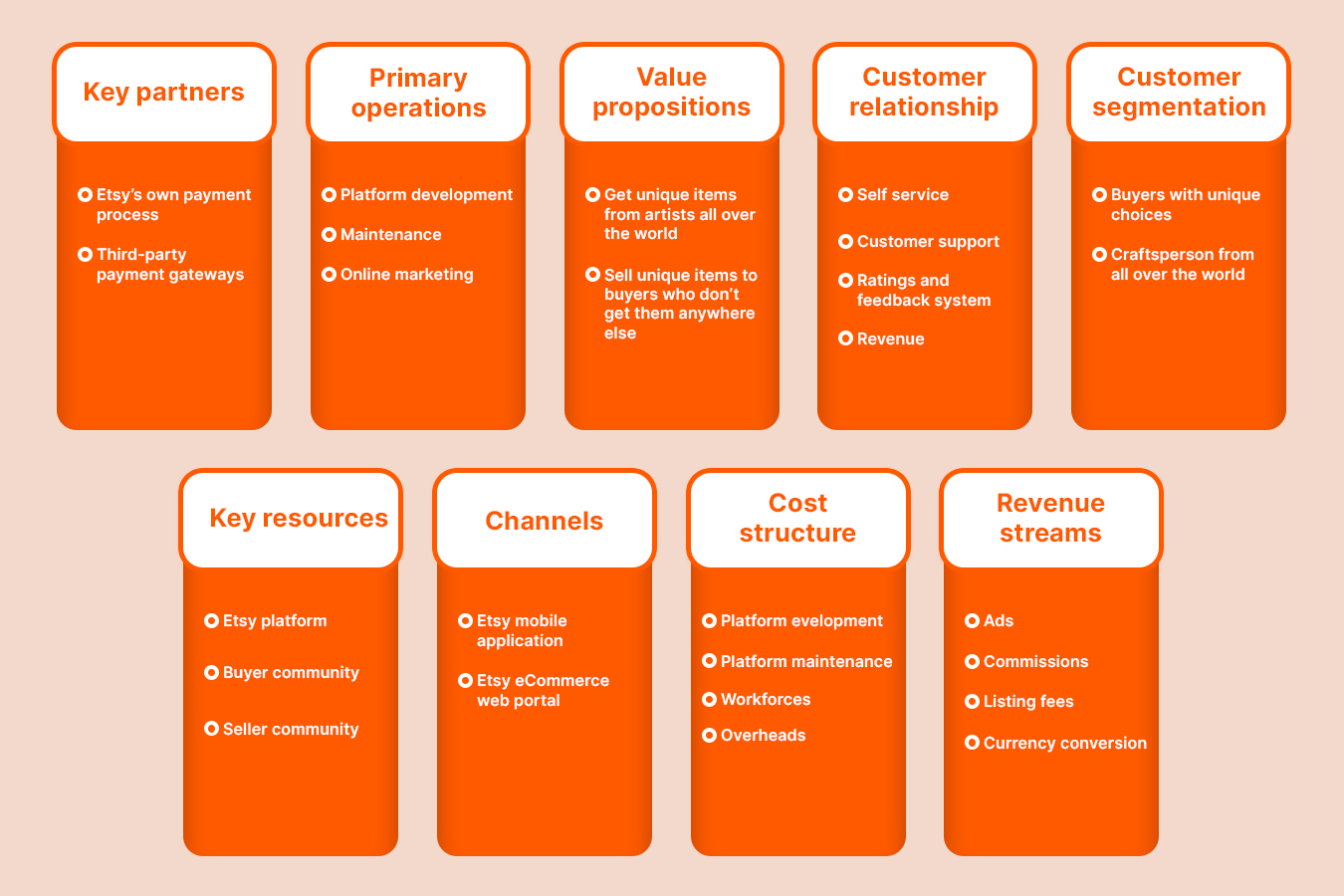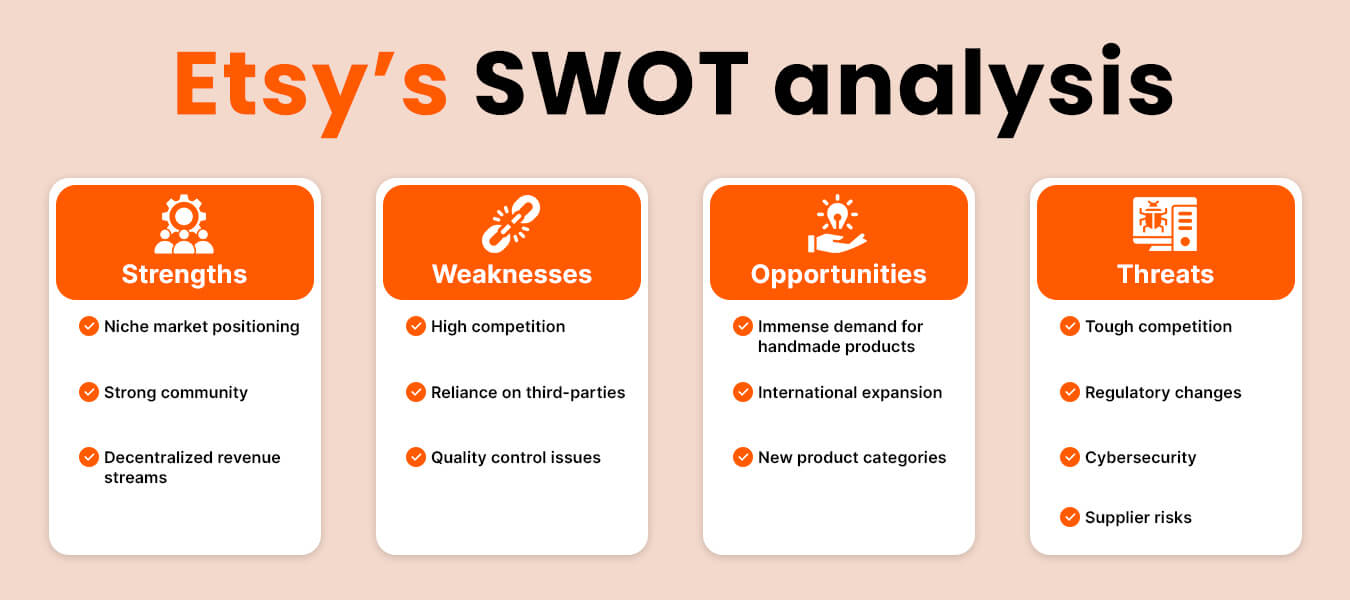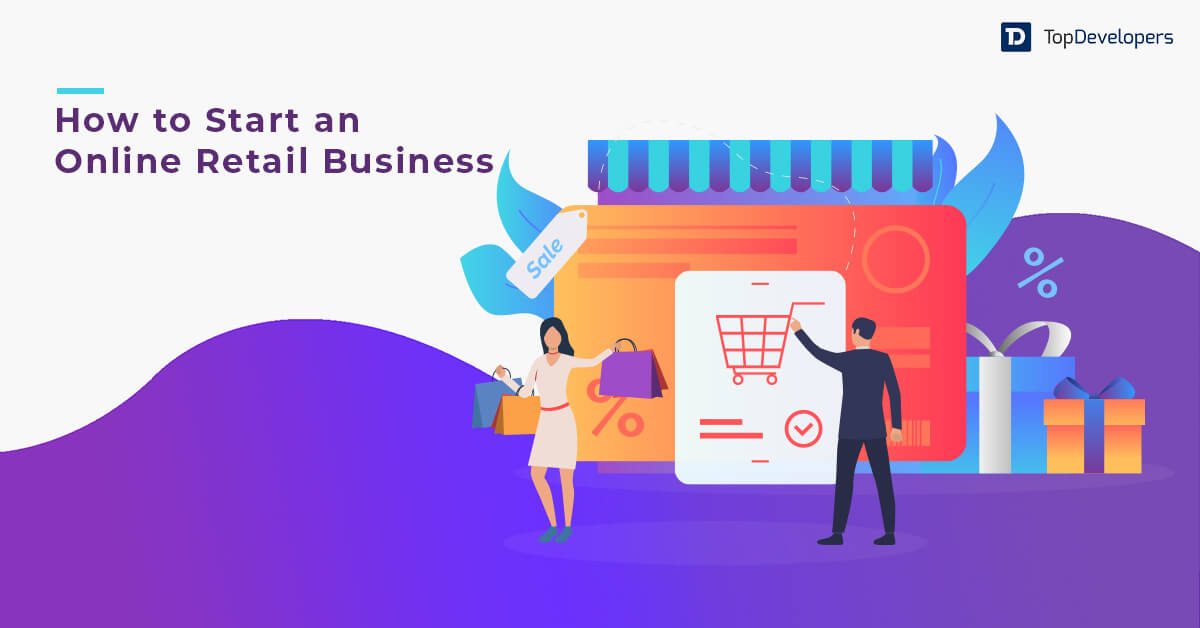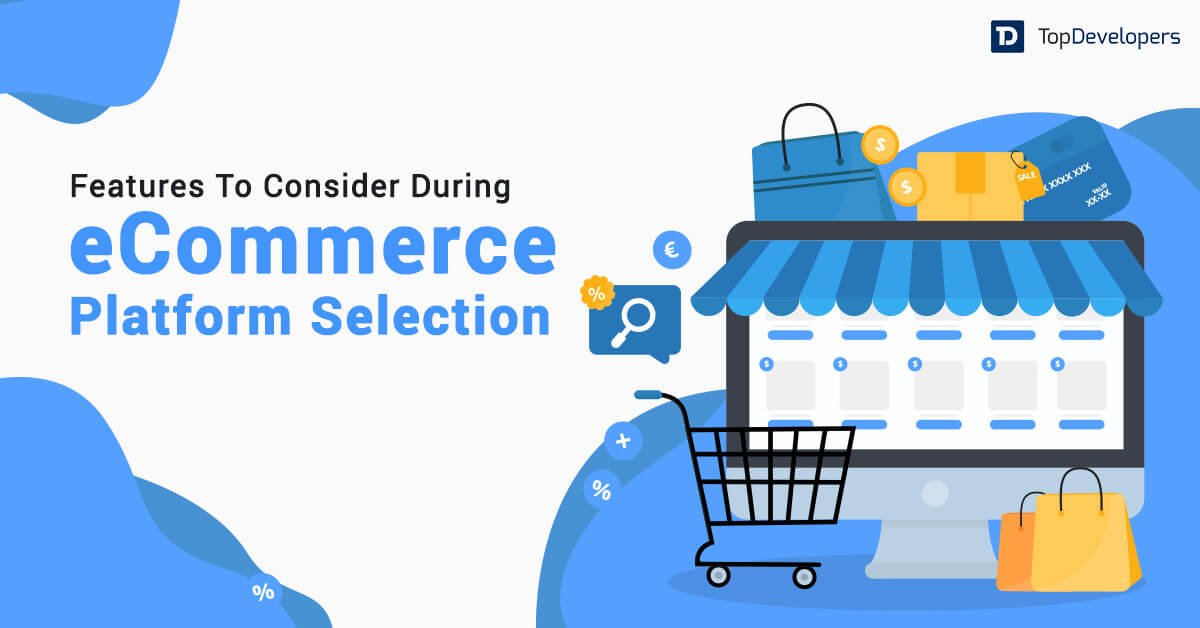
Etsy, which began as a small website in 2005, has experienced significant growth over the years. In 2023, the company reported revenues of $2.7 billion, marking a 9.58% increase from the previous year. According to available data, Etsy’s annual revenue for 2024 was $2.856 billion, reflecting a 12.94% increase from 2023. This indicates a continued upward trend in Etsy’s financial performance. Etsy, an online marketplace for artists to sell handmade, unique products to interested audiences worldwide, has proven its worth as a successful business model. Many people compare the Etsy business model with that of Amazon or eBay. The difference between Etsy and other large e-tailers is that Etsy operates in a more niche segment, and it focuses on providing incredible value to shoppers and merchants registered on its site.
Etsy is labeled as one of the most unique online marketplaces that connect customers with genuine artists who craft handmade items and have collections of ancient and vintage products. Etsy marks as earliest startup that focused on unique designs with an artistic touch and ancient flair.
Many entrepreneurs want to build a business like Etsy in either artistic or other niche categories. In this blog, we will dissect the Etsy business strategy and have a look at the reasons for its success.
Table of Contents
A few interesting facts about Etsy
- It is one of the biggest platforms for P2P (peer-to-peer) and C2C (customer-to-customer) eCommerce businesses where buyers and sellers are either micro-businesses or individuals.
- Etsy sellers earned staggering profits from the platform, CaitlynMinimalist being the most popular one recording more than 680,000 purchases in one month.
- The United States has been the leading market for Etsy. The eCommerce platform app witnessed more than 70 million downloads between 2015 and 2024.
- As of the Q4 of 2024, Etsy reported a Gross Merchandise Sales (GMS) of US $3.74 billion.
- It is said that Etsy brought ancient artifacts back into business. The platform changed the mindsets of buyers who started spending much on buying vintage items. Etsy uses computer vision to classify listing styles for over 60 million items.
Etsy Business Model – Explained
The business model of Etsy will answer your questions like what is the value proposition of Etsy? Who are its customers? The cost structure of Etsy? Etsy’s distribution channels? How does Etsy make money?
Etsy’s value proposition and USP
The value proposition of Etsy for sellers is that it allows artists and collectors having vintage products to sell their products online without worrying about the hassle of international shipping.
Etsy allows sellers to showcase their products to the world while setting their preferred selling price. The sellers can display as many products as they want, and they can even tag their products so that the buyers can easily find them.
The value proposition for buyers of rare items and handmade products is that they can order these products from the comfort of their homes.
Distribution channels of Etsy
Robust distribution channels are the strength of Etsy. Through these distribution channels, Etsy can reach a wider audience and sell its products efficiently.
The following are the distribution channels of Etsy.
- Etsy’s own platform
- Social media handles Etsy
- Events and workshops on Etsy
- Developing partner programs
- Advertising online and offline
- The word-of-mouth method
The cost structure of Etsy
The following are the various areas where Etsy spends money to keep the platform up and running.
- Customer service
- Shipment costs
- Maintenance of the platform
- Marketing costs
- Salary
- Seller Education
How does Etsy make money?
Etsy, Inc. adopts highly strategic business models to generate steady revenue streams from all of its users. The biggest reason why Etsy, Inc. makes money is its unique listing of rare items that buyers cannot find in traditional brick-and-mortar stores. According to a report from Statista, Etsy has more than over 8.1 million active sellers and 96+ million active buyers.
Here is how Etsy makes money:
Fees to list items to sell: The listing of products on Etsy comes with a minimal charge. Sellers need to pay US $0.20 to list each item on the Etsy platform. These fees are charged per listing and there is no refund on this.
Fees per transaction: Etsy puts a transaction fee on each sale. The platform charges 6.5% of the price of every item sold on the platform. However, the charge is applied to the total sale amount which includes handling and shipping charges.
Fees for payment processes: The payment processing fees are another way Etsy earns money. Etsy Payments is the platform’s own payment processing system. According to Etsy.com, the payment processing fees for Etsy Payments orders vary according to the location of a bank account. For example, for Argentina fees for Etsy payments might be 6.5% + 0.30 USD for every transaction while it will be 5%+25 INR for India. You can check Etsy payment processing fees according to country here.
Charges for commercials: Leveraging the benefits of its immense popularity all over the world, Etsy rents out its space to other sellers and companies. Promotion on the Etsy platform is possible with advertisements. These fees are additional to other fees mentioned above.
Currency conversion: Etsy is an international eCommerce platform for individuals and small businesses attracting vendors and buyers from all around the world. This increases the potential to earn from currency conversion; the platform charges 2.5% on the total amount billed.
How does Etsy work?
There are four models Etsy works on. From signing up a seller to list their products to rating and review by buyers, the 4-step model makes sure that it is a win-win situation for all users. Through this model, sellers get customers and customers buy unique products that are difficult to find elsewhere.
Step 1: Sign up
The sign-up process is mandatory for anyone who wants to use the Etsy platform. Primarily, it focuses on sellers’ sign-up after which they will be able to list their products on this eCommerce platform. For sellers, the registration fees are applied and the fees are valid for four months after which they need to renew their membership or subscription.
Step 2: Explore and purchase
Belonging to buyers, this step includes the exploration of hundreds of thousands of unique pieces of artifacts and items. These items are vintage and ancient and are difficult to find on other platforms and brick-and-mortar shops. A user can explore them through various categories and once selected, they can buy them.
Step 3: Online payment gateways
For buying, step 3 includes secure payment gateways. Etsy offers various payment gateways to grab every user with different modes to pay for the items purchased. A few of the payments accepted on Etsy include credit cards, debit cards, and bank transfers.
Step 4: Rate and review
After the purchase, Etsy offers buyers a feature to rate the seller and its item. The rating and reviews will help other buyers to know a seller and judge their services and products. This is a useful feature to learn about sellers; on the other hand, for sellers, this is an opportunity to spread the good word about them by providing memorable services and products.
Etsy’s business model canvas
The business model for Etsy includes all its stakeholders, key activities, value propositions, customer segmentations, and relations, plus the company’s key resources, revenue streams, and channels.
Here is the Etsy’s business model canvas –
Key partners:
- Etsy’s own payment process
- Third-party payment gateways
Primary operations:
- Platform development
- Maintenance
- Online Marketing
Value propositions:
- Get unique items from artists all over the world
- Sell unique items to buyers who don’t get them anywhere else
Customer relationship:
- Self-service
- Customer support
- Ratings and feedback system
- Revenue
Customer segmentation:
- Buyers with unique choices
- Craftspersons from all over the world
Key resources:
- Etsy platform
- Buyer community
- Seller community
Channels:
- Etsy mobile application
- Etsy eCommerce web portal
Cost structure:
- Platform development
- Platform maintenance
- Workforces
- Overheads
Revenue streams:
- Ads
- Commissions
- Listing fees
- Currency conversion
Etsy’s competitors
There is no business without competitors, and Etsy is not spared either. Here are some of the well-known competitors of Etsy who are in the same business of selling and buying vintage and unique pieces and give tough competition to the portal.
Storenvy: Storenvy is a social marketplace and e-commerce platform that allows independent brands and creators to showcase and sell unique products. It combines the functionality of a customizable online store with the visibility of a marketplace, helping small businesses grow their customer base.
DaWanda: DaWanda was a European online marketplace that specialized in handmade and unique items. Before its closure in 2018, it served as a hub for artists, designers, and crafters. Many of its sellers were migrated to Etsy after DaWanda shut down, reflecting the overlap in audience and product type.
Folksy: Folksy is a UK-based online marketplace focused on handmade crafts and goods created by British designers and makers. It offers a platform for local artisans to reach customers looking for truly handmade items, with a strong emphasis on supporting the UK craft community.
Not On The High Street: Not On The High Street is a curated marketplace based in the UK that features unique and personalized gifts, homeware, and lifestyle products. It supports small creative businesses by providing them with a platform to sell distinctive products not commonly found in mainstream retail stores.
ArtFire: ArtFire is an online marketplace where artisans, crafters, and vintage sellers can list and sell handmade goods, fine art, and craft supplies. It offers tools tailored for creative entrepreneurs and emphasizes community engagement and seller visibility.
Zibbet: Zibbet is a multi-channel selling platform designed for makers and artists. It allows sellers to manage and list handmade, vintage, and craft supply products across several sales channels, including Etsy, Instagram, Facebook, and the Zibbet Marketplace, all from one dashboard.
Bonanza: Bonanza is a seller-focused online marketplace known for its easy product listing and automation features. It enables sellers to sync products from platforms like eBay and Amazon, integrate with Google Shopping, and use tools like automatic background removal for product photos.
iCraftGifts: iCraftGifts is a curated marketplace exclusively for handmade products. It focuses on quality craftsmanship, allowing sellers to offer handmade gifts such as jewelry, apparel, home decor, and accessories—prohibiting mass-produced or vintage items to maintain its artisan niche.
IndieMade: IndieMade is an all-in-one website builder tailored for creatives. It enables artists, crafters, and indie entrepreneurs to create their own branded online store with features like integrated blogs, event calendars, and galleries—ideal for those wanting independence from traditional marketplaces.
Amazon Handmade: Amazon Handmade is a specialized section of Amazon that features artisan-made products. Sellers must apply and be approved to join, ensuring a curated selection of handcrafted items. It provides the benefits of Amazon’s massive customer base and logistics, with a focus on unique, quality pieces.
Big Cartel: Big Cartel is an e-commerce platform geared toward independent artists and makers who want to sell unique or hard-to-find items. With a minimalist interface and customizable storefronts, it’s ideal for small brands and creatives looking to build a direct relationship with their customers.
Etsy’s SWOT analysis
Etsy is an online marketplace known among eCommerce giants for its unique value proposition for both sellers and buyers who are interested in innovative, personalized, and niche artifacts. The SWOT analysis of Etsy helps you evaluate its strengths, weaknesses, opportunities, and threats in the eCommerce industry so that if you are planning to venture into Etsy type of business, you should know how to do it and what precautions you need to take beforehand for success.
Strengths
Niche market positioning
Etsy has successfully placed itself in a distinctive niche in the eCommerce market as it focuses on handcrafted, vintage, and antique items. Hence, the platform differentiates itself from other online commerce platforms that are into mass selling of generic products. Etsy’s niche positioning attracts and retains a loyal customer base that values creativity, quality, and art.
Strong community
Another strength of the Etsy business is its strong community of sellers and buyers who are united by a common passion for handmade unique artifacts. Etsy provides ample tools and features to foster feedback, communication, and collaboration among all users. For instance, sellers can create teams and forums for exchanging tips and advice; on the other hand, buyers can give ratings and reviews to sellers. Additionally, both parties can use Etsy’s messaging systems to communicate with each other. Etsy’s community strategy contributes to its brand awareness through word-of-mouth marketing.
Decentralized revenue streams
Etsy business model does not generate revenue from a single source. Hence, decentralized sources of income ensure that they have a steady flow of revenue. They have revenue models such as listing fees, transaction fees, advertising fees, shipping labels, and other services through which they earn money. Diversified income sources reduce its dependency.
In addition, Etsy has acquired other niche marketplaces like Reverb (a marketplace for musical instruments), Depop (a platform for selling and buying fashion accessories), and Elo7 (a platform for Brazilian crafts). These acquisitions or investments have expanded Etsy’s product portfolio and customer base.
Weaknesses
High competition
Etsy surely faces intense competition from other eCommerce platforms offering similar or substitute items. For example, Amazon Handmade is a subsection of Amazon selling handmade products from artisans all across the globe. Other competitors include eBay, ArtFire, Big Cartel, and Aftcra. These competitors report bigger scale selling, have more resources, may offer lower prices, or deploy better technology compared to Etsy.
Reliance on third-parties
Etsy has to rely on third-party service providers like Google, Facebook, X, Instagram, and Pinterest to generate traffic and acquire customers through marketing. However, Etsy will have to suffer the sudden change in these platforms’ algorithms, policies, or fees at any given point in time with no prior notice or consultation with Etsy. It adversely affects Etsy’s stand, visibility, reach, and finally profitability.
Quality control issues
Etsy does not have any hold on the quality control of the antique products sold on the platform. As the platform banks on sellers to comply with certain policies and standards for product quality and safety, there is no guarantee for authenticity and legality. There are incidents where some sellers have violated rules intentionally or unintentionally. Ultimately, the platform suffers from this and may witness customer dissatisfaction and complaints leading to disputes, refunds, or legal consequences.
Opportunities
Immense demand for handmade products
There is a mounting demand for handmade products among consumers worldwide. Also, buyers looking for antique, unique, and innovative products are growing in numbers. According to a report by ResearchAndMarkets.com, the global handmade products market is expected to grow at a compound annual growth rate (CAGR) of 9.5% from 2020 to 2028. This presents a great opportunity for Etsy to tap into this promising market and increase its sales and market share.
International expansion
Etsy, an American eCommerce company, has a large potential to expand its presence to international markets with immense demands for handmade products. Only a small portion of its gross merchandise sales (GMS) comes from outside the US which means that there is still a high chance of growth in Asia, Europe, Africa, and Latin America. Etsy can leverage its local expertise and partnerships to meet the preferences and needs of global cultures and markets.
New product categories
It is possible to explore new product categories associated with Etsy’s core offering of handicraft items. For example, the platform can offer digital products like downloadable art prints, eBooks, 3D prints, or crypto acceptance. Etsy can also go for more services like custom designing or consultation. Such newer products and services have the potential to increase its value proposition and revenue.
Threats
Tough competition
One of the main threats that Etsy faces is the tough competition from other online marketplaces like Alibaba, Amazon, and eBay. These platforms have larger customer bases, more sales, and are more established brands than Etsy. Due to the volume of products, they can house, they also offer much lower prices, faster shipping, and wider product ranges. Etsy may lose its competitiveness to these rivals. It is difficult for them to maintain their loyal niche of buyers and sellers.
Regulatory changes
Another threat that Etsy deals with is the legal and regulatory risks related to its business model. Etsy operates in more than one country and has to follow different jurisdictions. This simply means that the eCommerce platform must comply with several laws and regulations regarding taxes, privacy policies, intellectual properties, consumer protection, data security, and labor standards.
Etsy also relies on its sellers to follow its policies and guidelines, but it cannot guarantee that they will not violate any laws or infringe on any rights of third parties. Etsy may face lawsuits, fines, sanctions, or bans if it fails to monitor and enforce its platform effectively.
Cybersecurity
As with any other online eCommerce platform, Etsy faces cybersecurity threats like hacking, malware ingestion, data breaches, and identity thefts. Any such breach or apathy could damage the brand image and it can affect the overall revenue.
Supplier risks
The largest chunk of Etsy’s sales comes from independent sellers or those who are small business owners. They don’t have powerful supply chain systems; nor do they have any inventory management system as a result, there could be a supply risk for shipping or meeting the demands of the goods online. Additionally, product quality issues, rising costs, and uncertainty in estimated delivery dates could be frequent issues that turn into threats if they become regular.
Etsy revenue model
Etsy has a wide range of revenue models as it makes money through transaction fees, listing fees, advertisements, payment processing fees, and subscription fees. Over the years, Etsy’s business model has evolved, and now the company monetizes at many stages throughout the buyer journey.
Here we will examine the revenue model of Etsy in detail.
Listing fees
Etsy takes a flat fee of $0.20 for every item that the sellers list. The sellers will be charged money regardless of the fact whether the item sells or not. If the sellers, however, choose to post the item on Private, then they are charged only when the item sells.
The listings on Etsy.com expire after four months, and the sellers will have to pay a renewal fee of $0.20. Unless the sellers choose, the listings would be automatically renewed after every 4 months.
Promotional and advertising charges
Etsy promotes the products of the sellers listed on its platform by providing them with promotional and advertising fees. Etsy offers services like Etsy advertisements and offsite advertisements.
The Etsy ads appear in the following spaces.
- Search results
- Category pages
- Market pages
The advertisers are charged only when the users click on an advertisement. The CPC(cost per click) rates will differ across various advertising spots, categories, and countries.
Apart from promoting products on its own website, Etsy also helps the sellers by placing offsite ads on third-party platforms like social media platforms and search engines. Etsy collects fees for offsite ads only when the user clicks the offer and completes the purchase within 30 days of the click. Etsy calls the orders fulfilled through the offsite route as attributed orders.
The seller pays around 12-15% of the sale price as a commission when an offsite sale is made through Etsy’s efforts. The amount of commission paid through attributed orders generally depends upon the Etsy shop’s sales over the prior 365 days.
Pattern
The sellers on the Etsy platform can build their stores independently using Pattern, which is a website builder. Pattern offers sellers a lot of benefits, including the ability to build an unlimited number of listings, a detailed web analytics system, email marketing, blogging, and social media sharing. For sales conducted through Pattern-enabled websites, Etsy does not charge listing or transaction fees. For users choosing Pattern, Etsy does not charge any fees for 30 days. After 30 days, Etsy charges $15 as the monthly subscription fee.
Transaction fees
For all sales made through its website, Etsy charges a 5% commission. The merchant may also be charged for shipping and gift wrapping a product. Even after increasing its transaction commission from 3.5% to 5%, Etsy has been able to maintain its standing as one of the most affordable options for sellers. The competitors of Etsy, like eBay and Amazon, charge anywhere between 8-15% as their commission.
Subscriptions
For those sellers who want something extra, Etsy has an offering named Etsy Plus. The service has several sales-boosting features, and Etsy charges $10 per month as the subscription charge.
Etsy Plus features
- Advanced customization options
- Perks like business cards and customized shipping boxes
- Notifies interested customers when items are back in stock
- Etsy credit of $5
- Credits for 15 listings
- Free .store domains
- 50% discount on .com and .net registrations
Payments processing fees
To ensure a truly hassle-free experience for its international sellers and customers, Etsy offers a wide array of payment methods in a lot of international currencies. Customers can pay through the following options on Etsy.
- Debit cards
- Credit cards
- Gift card
- Etsy credit
- PayPal, Apple Pay, and Google Pay
To facilitate these payment transactions, Etsy charges a flat fee in addition to a percentage commission. While the flat fee is typically $0.3, the percentage commission ranges from 3-6%. The exact transaction amount will depend on the country where the seller’s bank account is located.
Etsy gains almost 1/4th of its revenue from the services it provides to sellers. The ambitious sellers will try to outcompete others on Etsy by availing the services that Etsy provides. Established marketplaces like Etsy benefit not only from the sales commissions but also from the competition between sellers.
Etsy’s revenue from services makes up almost a quarter of its total revenue. This illustrates how established marketplaces benefit not only from commissions but also from their sellers’ keen competition.
Reasons for the success of the Etsy business model
Etsy’s phenomenal success as a marketplace can be attributed to the fact that it chose a narrow domain of art and collector’s items. While competitors like eBay and Amazon also list such items on their platforms, they were unable to replicate the success of Etsy in the art and collector’s items domain. We will have a look at the reasons for the phenomenal Etsy business model success.
Accurate search results
How Etsy works to deliver accurate search results to its users is one of the primary reasons for its success. The online shop for handmade, vintage, custom, and unique gifts has a result-oriented search algorithm that provides the users with precisely what they are looking for and not just with matching search terms. On Etsy, the users come to find customized and vintage products, and these products will be unique.
Hence it is very difficult to prepare a search algorithm that provides the exact search results for these products. Etsy has done a great job in doing this, and this is one of the major reasons for Etsy’s business model success
Word-of-mouth advertising
Word-of-mouth advertising is still one of the most effective forms of advertising and an important part of any mobile commerce strategy. When it started, Etsy was the only site that sold art and vintage products. A lot of Etsy’s initial customers were women, and it relied heavily on word-of-mouth publicity. The global online marketplace has revealed that 2 out of 3 customers were women and word-of-mouth publicity in women’s circles was a major reason for Etsy’s sales.
Extended APIs
Etsy provides the developers with its own API that lets the developers build their own Etsy-powered web and mobile applications. The Etsy ecosystem grows in this way and gains new customers.
Robust support to artists
Etsy made sure that it was there for the artists whenever they required it. The company conducted workshops for local artists and stood with them to provide support services to them, including giving business advice. Etsy even disbursed small loans to promising artists in some cases.
The robust support provided by Etsy to the artists improved its standing in the art community, and more artists started selling on Etsy.com. As more artists joined, more people started to buy from it, creating a positive loop for Etsy.
Learn from Etsy’s business model
Etsy has a robust business model that is built on the trust of artists and buyers of art products. The strong support that Etsy provides to its artists, the fact that it is still the cheapest place to sell customized artifacts and collector’s items, and the first-mover advantage in the online art marketplace niche are the multiple tailwinds driving the growth of the Etsy business model. The entrepreneurial ecosystem of Etsy has created a virtuous cycle that gets stronger with time. It is possible to replicate the Etsy business plan for your local market and even make it better. Contact the top eCommerce developers to build an online marketplace like Etsy.
 Derek Cohen
| Apr 7, 2025
Derek Cohen
| Apr 7, 2025
Analyzing business activities and data to formulate the best business development ideas is where I earn appreciations and remunerations. I’m an ardent reader, business adviser, gadget aficionado and an amateur yet an avid writer. My urge for innovative writing evokes every time I come across new gadgets, neo technology and novel technical events.
